Gotta Go Fast: Ranking All of The Sonic The Hedgehog Games
USgamer takes a look at the Sonic the Hedgehog franchise and decides which ones are the best of the best.
This article first appeared on USgamer, a partner publication of VG247. Some content, such as this article, has been migrated to VG247 for posterity after USgamer's closure - but it has not been edited or further vetted by the VG247 team.
One of the things that popped up in many reviews of Sonic Mania is a look back at the troubled history of the franchise. Sega hasn't always put out the best games for Sonic and his pals. Now that Sonic Mania has shown us how to correctly present the essence of the hedgehog, it's time to take look at that long history.
The team at USgamer sat down and ranked most of the mainline and spinoff Sonic games. If you're behind on your Sonic history, we also cover the titles that live in other genres and tangents. So sit back, enjoy this look at Sonic's past, and figure out how you'd personally rank all the Sonic titles.
The Worst of the Worst
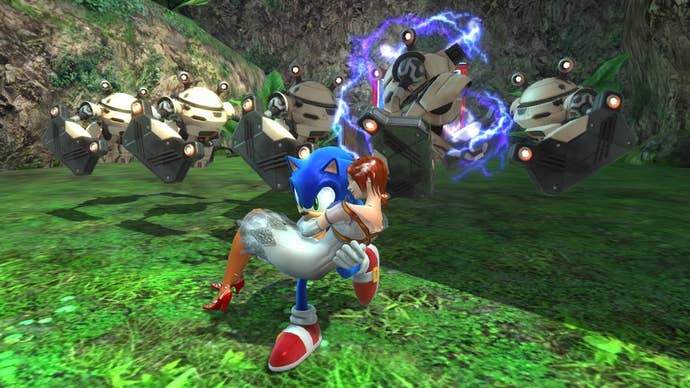
The Puzzle Games
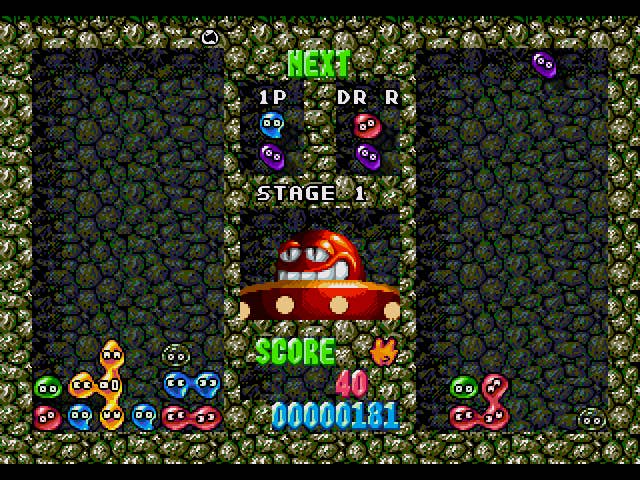
Dr. Robotnik's Mean Bean Machine stands as one of the few puzzle games based on the Sonic the Hedgehog franchise. The game is actually the Western release of a Japanese title Puyo Puyo, developer by Compile and Sega AM1. The original game featured characters depicted in Japanese anime and manga style, so Sega executives felt that Western audiences wouldn't pick it up. So the entire game was retrofitted with Sonic characters instead. Otherwise, it's Puyo Puyo, meaning it was quite good.
Sonic Labyrinth launched on Sega Game Gear around the same time as Sonic Blast on Game Gear and Sonic 3D Blast on Sega Genesis and Sega Saturn. It was the odd one out, standing as a poor man's version of Marble Madness, taking the worst of that game and the worst of Sonic and cramming it into one title. Absolutely dire.
27. Sonic the Hedgehog [2006]
It's hard to know where to start with Sonic the Hedgehog—a game so bad that it reportedly forced Sega to completely rethink the direction of the franchise (though it certainly had its hiccups in the years that followed: see Sonic Unleashed).
Everyone likes to fixate on oddities like Sonic kissing a human woman, but the pure fact of the matter is that this game is bad. It mixes the traditional twitchy, Sonic Adventure-style platforming with an awful camera and many, many glitches. And if that's not enough, the franchise Poochie, Shadow the Hedgehog, is there as well.
And vehicles. Oh god, why are there vehicles in a Sonic game?—Kat
Sonic the Hedgehog was so bad that it became synoymous with the decline of the entire series. It's awful, broken, and deserves to be thrown down the memory hole, but nevertheless lives on in ironic Let's Plays, because who doesn't like watching someone play a broken piece of junk?
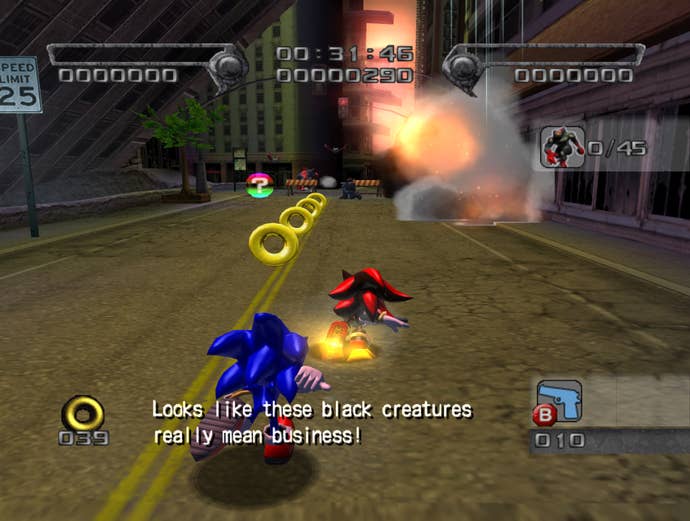
26. Shadow the Hedgehog
I think life would be better if I never had to think about Shadow the Hedgehog ever again. Not the character, but his very own game.
I can't think of any other game in existence that's more unnecessary. More infuriating. More bizarre. That feels so out of place alongside others in the Sonic catalogue. Shadow the Hedgehog doubles back on the good nature the Sonic series has put forth over its lifespan, and does a 180 with it. Alas, Shadow the Hedgehog exists, like an executive at Sega saw the trend of guns in games, and urged developers against their will to shoehorn weapons into the hands of an Erinaceinae with no qualms.
There is nothing redeemable about Shadow the Hedgehog.—Caty
The Deeply Flawed

The Fighting Games
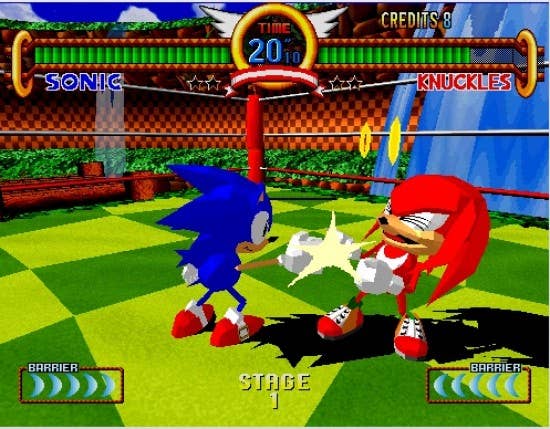
First up was Sonic the Fighters, an arcade fighting game. Sonic the Fighters only exists because AM2 character designer Masahiro Sugiyama threw Sonic and Tails into another Sega fighter, Fighting Vipers, out of boredom. Virtua Fighter creator and designer Yu Suzuki saw it, took it to Sonic boss Yuji Naka, and the rest is history. Sonic the Fighters was a poor version of the Virtua Fighter games and didn't really get a wide release until the GameCube and PlayStation 2 release in 2005.
Then there was Sonic Battle for the Game Boy Advance. This isn't a fighting game per se, instead being a Sonic version of classic beat-em-ups like Double Dragon. Up to 4 characters fight it out in 3D arena. Sonic Battle looked good, was easy to get into, and ultimately stands as a pretty okay attempt at Sonic characters beating each other up.
26. Tails' Skypatrol
[Editor's Note: Like Nadia said, this game looks cute. But it's also really, really bad. As a pretty obvious cash-in on the brand, Tails' Skypatrol just barely misses tumbling into the Worst of the Worst tier.]
Tails' Skypatrol for the Game Gear is a little-known shooting game threaded with platforming elements. It's adorable, and it looks great for a Game Gear title – but as with many games for the handheld, the giant sprites make deft maneuvers difficult. You won't suffocate and die if you miss out on this one, but if you're super-duper interested in flying with Tails, Skypatrol can also be found the Sonic Gems collection, and as an unlockable game in Sonic Adventure DX: Director's Cut.
Oh, there's a boss character named Fockewulf, by the way. That rules. —Nadia
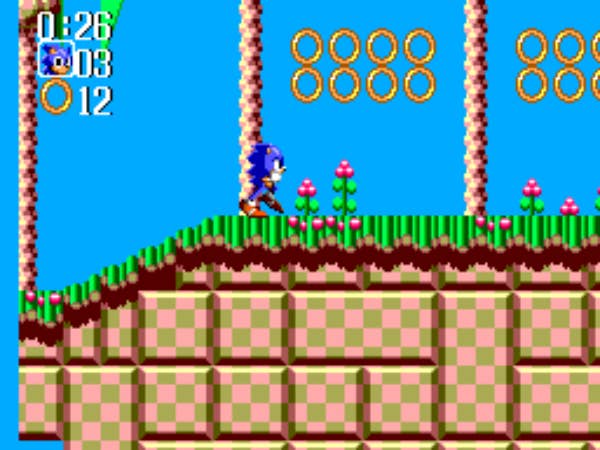
25. Sonic Chaos
One of the many, many 8-bit Sonic platformers for the Game Gear. We tried to get as many as we could, but they were almost too numerous to mention. Suffice it to say, they're all really bad.—Kat
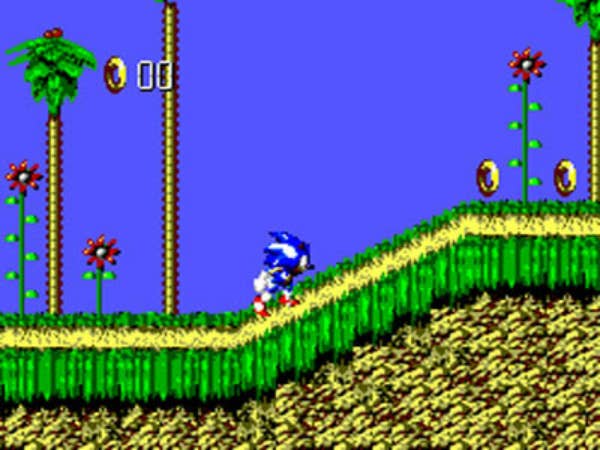
24. Sonic Blast
So there was Sonic 3D Blast, an isometric 2D title done by TT Games with the help of Sonic Team. It wasn't really a Sonic game, but it bore the name. These are the other games that came out around the same time. Sonic Labyrinth is the first of the two, sharing the same 2D isometric gameplay as Sonic 3D Blast. Think of Marble Madness with feet, as Sonic has to roll around arenas fighting Dr. Eggman and his robots. It wasn't great.
On the flipside, there was Sonic Blast only a year later. Sonic Blast drops the "3D", but actually ends up being the more traditional Sonic title of the two. Unfortunately, it launched on the Game Gear, Sega's portable platform that was already on its way out the door. The 2D characters were 3D rendered like Donkey Kong Country, but the resulting sprites were actually too big for the Game Gear's tiny screen. It was an unpleasant end to the Game Gear, which was discontinued a few months later. —Mike
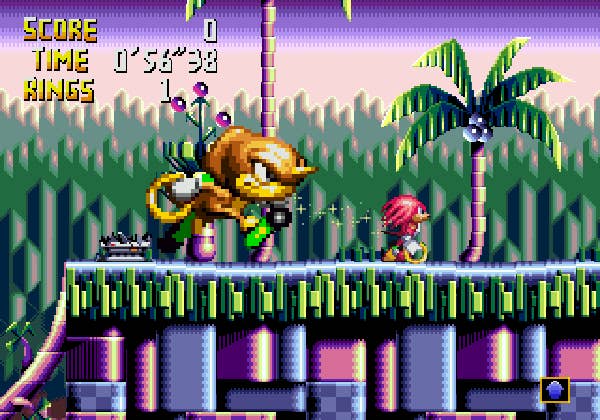
23. Knuckles' Chaotix
I never played Knuckles' Chaotix, because like 99.9999% of the world's population, I never owned the 32X add-on extension for the Sega Genesis. The game sure looks great: I wager Christian Whitehead took notice of this game's bold, beautiful colors when he and his team conceived Sonic Mania. However, the game's core mechanic–using partner characters to build tension for speed-boosts via a giant rubber band threaded between two rings–didn't score well with Sonic fans and critics. Chaotix is built around an interesting idea, but it just doesn't work (a problem that plagued many Sonic games released thereafter. Innovation is no substitute for good gameplaly). —Nadia
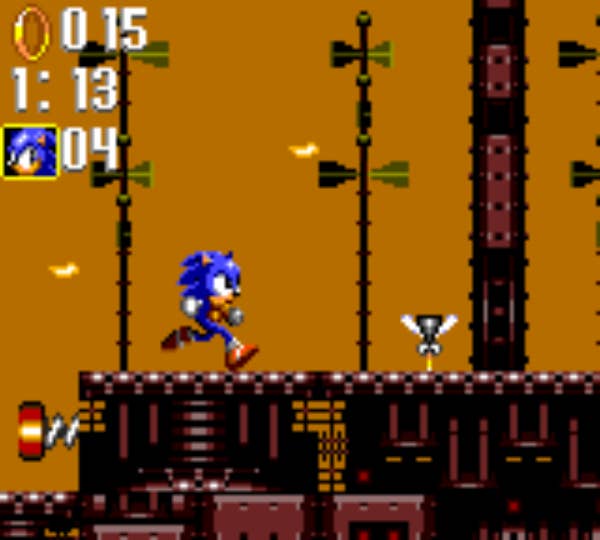
22. Sonic Triple Trouble
Another Sega Game Gear iteration in the Sonic franchise. Sonic the Hedgehog: Triple Trouble is the sequel to the earlier Sonic Chaos. The game is side-by-side story with Sonic The Hedgehog 3, sharing a number of the same characters by in a much easier adventure. Part of Sonic is the additional layer of difficulty preventing you from breezing through the game and Sonic Triple Trouble has none of that. Think of it as the storebrand version of the proper Sega Genesis Sonic games: the same basic idea, but consuming only leaves you with a sense of ennui and despair. —Mike
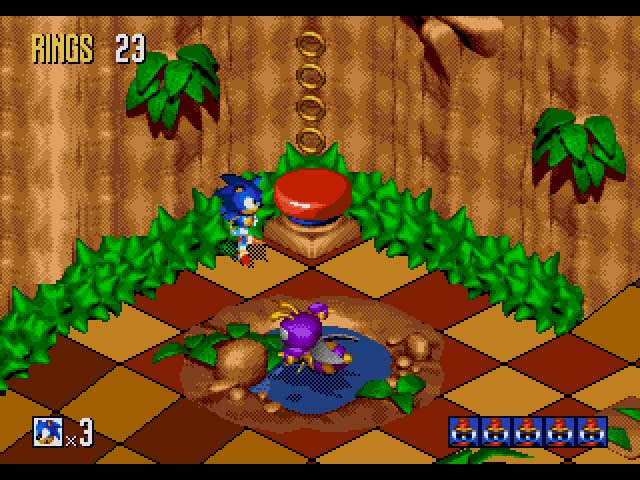
The Party Games

Sonic Shuffle is a virtual board game developed by Hudson Soft for the Sega Dreamcast. It's essentially Mario Party with Sonic characters, but with a card game system underpinning the entire experience. Mario Party is already responsible for lost and broken relationships, due the random aspect of the board games. Sonic Shuffle was just as bad, but without as many mini-games and with longer load times. It also had the added benefit of the AI being tuned too hard, meaning a game against the CPU is like fighting against someone who thinks you killed their family.
21. Sonic 3D Blast
The year is 1996. Sega realizes that 3D graphics are going to be a thing in the upcoming era of gaming consoles, so it begins working on Sonic X-treme for Sega Saturn. The problem is X-treme's full 3D presentation is new territory for the company. So it commissions the development of Sonic 3D Blast, a faux-3D game for Sega Genesis and Sega Saturn, just in case X-treme runs afoul of any issues.
Surprise! It does run into issues, eventually being cancelled and leaving Sonic 3D Blast as the "3D" Sonic game to carry the name. The result was the next flagship Sonic games was an isometric 2D title developed by Traveller's Tales (the folks who would go on to do everything LEGO) and Sonic Team, hastily ported to the Sega Saturn with only slight upgrades. It wasn't a horrible game, but it probably shouldn't have been a Sonic game. —Mike
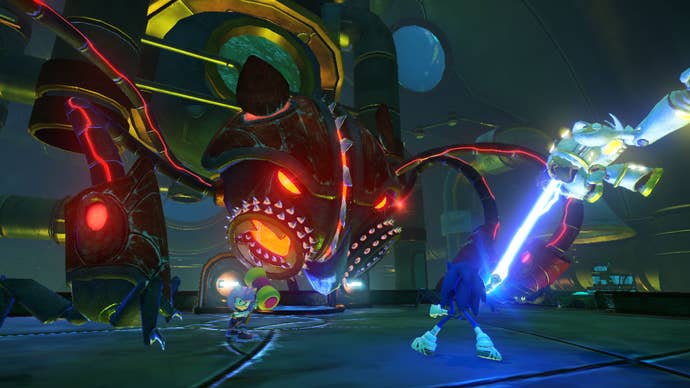
20. Sonic Boom
I've lost count with how many times Sega has rebooted Sonic. If you think about it, almost every Sonic game since its original 2D smashes feels like a reboot; endless new directions for the speedy blue star. Sonic Boom is yet another one of those, except alongside a new line of games, it launched with a cartoon as well. Sonic Boom saw a more "fashionable" Sonic. A Sonic with a bandana, extremely long legs, a different color pattern. His friends too, especially the now-super-buff Knuckles, had slight changes to their designs. Sonic Boom was sure a new direction for Sonic, even if it wasn't necessarily a good one.
But hey, at least its cartoon seems like a vehicle for positivity and progressiveness. —Caty
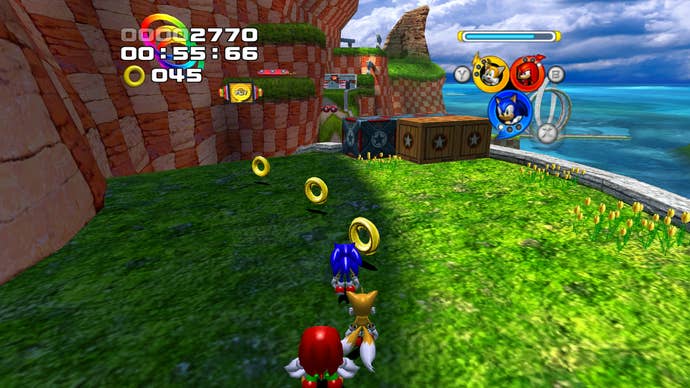
19. Sonic Heroes
To be perfectly frank, Sonic Heroes isn't great. It is however one of the only 3D Sonic games I've played, and that's why I'm writing about it for this list today.
Sonic Heroes has an unwieldy gameplay system that asks players to choose a Sonic team comprised of three members. You'll control have control over all three members of the team during any mission, and swap between them throughout a level. The main Sonic team for example is made-up of the classic trio of Sonic, Knuckles, and Tails. Each character in a team has a class-based specialty like power, flight, and speed. Need to fly over something? Switch to Tails. Got something that you need to break? Knuckles is your dude. Gotta go fast? Tails again. Just kidding, it's your boy Sonic.
Anyways, the point I'm trying to make is that this system was kind of annoying, but in a way, mixing and matching made Sonic Heroes kind of like a puzzle game so that was kind of interesting. Also as a kid I really liked that robot E-102 Gamma and I thought his design in Sonic Heroes was really cool at the time. —Matt
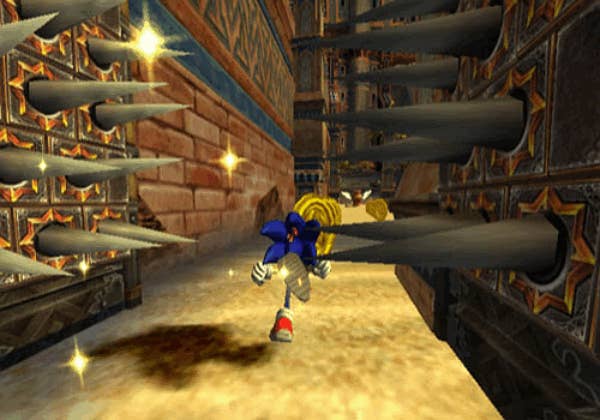
The Racing Games

Ever since Super Mario Kart launched back in 1992, Sega has wondered if they could get in on that racing action. The company's first attempt was Sonic Drift 1 and 2, both for Sega Game Gear. The problem here was two-fold. One, half of the Game Gear's tiny screen was taken up by the course map, leaving the racing section to suffer. Two, the racing itself felt a bit like a poor man's Outrun. Sonic Drift 2 was better, but not great. Sega followed it up with Sonic R for Sega Saturn, which launched with five courses in total. Yeah, the less that's said about it, the better.
The two Sonic Rivals games are another odd entry in Sonic's history. Sonic Rivals was a racing game, but one that played out in 2.5D. The world was 3D, but the races themselves took place on a 2D plane. The issue is that Sonic Rivals is a racing game with only two characters at a time. Even if you could stretch enjoyment out of that, you only had five racers to choose from, and only one real multiplayer mode. Sonic Rivals 2 upped the ante with eight racers, each with a Signature Move, and other multiplayer modes, but it only came a year after the first one. Rivals 2 was everything Rivals 1 should've been, but in the end, it wasn't really want fans wanted.
Then there's the three Sonic Riders games: Sonic Riders, Sonic Riders: Zero Gravity, and Sonic Free Riders. All three titles had Sonic coasting along on hoverboards, "shredding" along his race courses in "Extreme Gear". The Riders games are closer to F-Zero and WipeOut than many of the other titles. They're not horrible on paper, with plenty of tracks and characters, but reviews were mixed at best and the series ended with the horrible Sonic Free Riders, built exclusively for Kinect on Xbox 360.

The more successful attempt was Sonic and Sega All-Stars Racing and its sequel, which had a realization that Nintendo wouldn't come to until Mario Kart 8. There's no reason to stick to your mascot character's universe only, so why not have fun with everything your company has access to? Sonic and Sega All-Stars Racing was actually pretty good, at least on consoles. It wasn't until developer Sumo Digital followed up with the sequel, Sonic and All-Stars Racing Transformed, that everyone agreed that the Sega had finally gotten kart racing with Sonic right.
So of course Sega never made another one.
18. Sonic and the Secret Rings
MAKE BELIEVE'S REBORN
MAKE BELIEVE'S REBORN
MAKE BELIEVE'S REBORN
Yeah, Sonic and the Secret Rings' tendency to repeat the first line of Seven Rings in Hand every time you switch a page in the menu is indicative of this Wii game's general quality: Kitschy and kind of cute, but sloppy. Unlike many Sonic fans, I don't mind Secret Rings' odd story, which is a bastardized retelling of Arabian Nights with Sonic smack in its middle. Yeah, it's dumb, but the storybook-stylized cutscenes make it palatable. Unfortunately, the game itself is a relentless collect-a-thon, and its auto-running mechanic is better suited for a free-to-play mobile title than a Sonic game. —Nadia
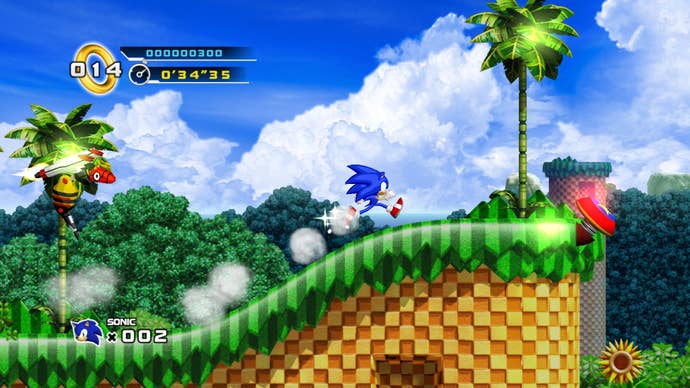
17. Sonic 4: Episode 1 and 2
Long before Sonic Mania was a twinkle in Christian Whitehead's eye, Sonic the Hedgehog 4 was supposed to restore Sonic to his 2D glory. Clearly, it didn't happen. Though the first episode (yes, Sonic 4 is episodic) received a warm reception, the honeymoon phase dropped lower than Satan's own septic tank by episode 2. Episode 3 never arrived, and it probably never will.
What went wrong with Sonic 4? Choose: Bland graphics (though episode 2 pulled off some stunning backgrounds), uninspired music (outside of Splash Hill Zone), flat level design, and clunky physics are just a few of the reasons why nobody looks back on Sonic 4 with much fondness. It was bold of Sega to label the game as the successor to Sonic's Genesis adventures, but this middling Sonic game isn't worthy of its "4." —Nadia
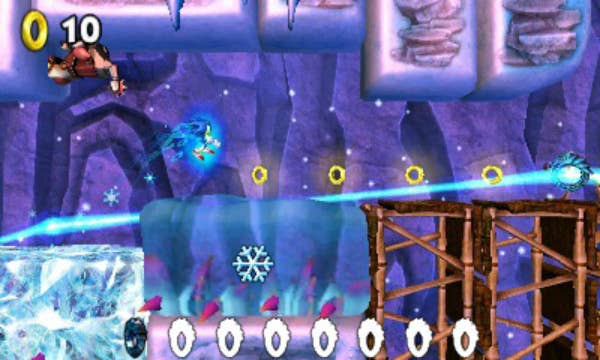
16. Sonic Boom: Fire and Ice
Fire and Ice isn't a cold puddle of puke like the first Sonic Boom title, but it's not exactly a return to Sonic's glory days, either. It's a pretty-ok side-scrolling platformer that lets Sonic and the crew open new areas by switching between fire-and-ice powers—a bit like Mighty Switch Force, actually. I can't give it a hearty recommendation in a world where a 2D Sonic masterpiece like Sonic Mania already exists, but I'm OK with Sonic Boom's general existence; as Caty mentioned, the sub-series gave us the off-the-wall, self-aware Sonic Boom cartoon. If there is a better game mascot suited for a "Misery" parody that involves fan-obsessed character roleplay and "spicy SonAmy fanfiction," I've yet to meet said mascot. —Nadia
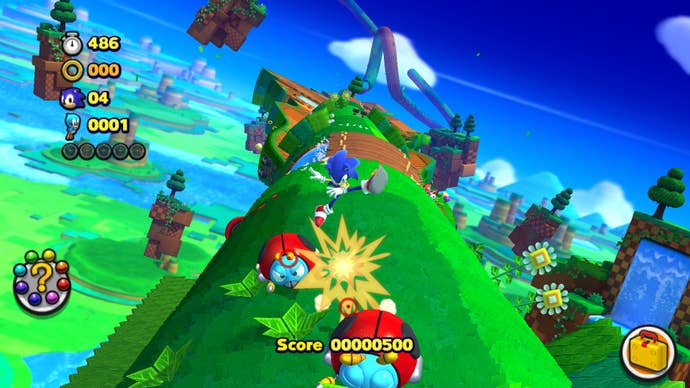
15. Sonic Lost World
My husband marathoned Sonic Lost World with former Archie Sonic comic writer, Ian Flynn for charity. They raised over $2,000 for a children's hospital here in Toronto, but those mind-gelling 24 hours taught me an important lesson about game development: Mario Galaxy-style games should be handled by developers who have the chops to pull them off, i.e. Nintendo. Rolling around Lost World's spherical and cylindrical landscape is fun for a time, but the loose controls made me very appreciative for Mario Galaxy's water-tight physics. Sonic Lost World gets points for trying something new (or rather, applying an old idea to the Sonic universe), but ultimately it's as middle-of-the-road as a Sonic game gets. —Nadia
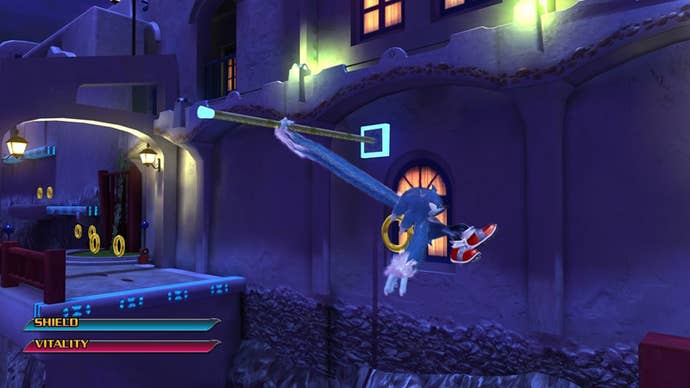
14. Sonic Unleashed
Pretty much all you need to know about Sonic Unleashed is that it spawned the enduring "Sonic Cycle" meme, which is used to define nerd rage over disappointing announcements to this day.
The daytime sections were a fair sight better than those of Sonic the Hedgehog 06, boasting improved graphics and a better camera, but the gameplay was derailed by the awkward, pace-breaking brawling of the Werehog sections. Taken together, it could have been a lot worse, but the very idea of Sonic becoming a "Werehog" at all remains a byword for bad ideas.—Kat
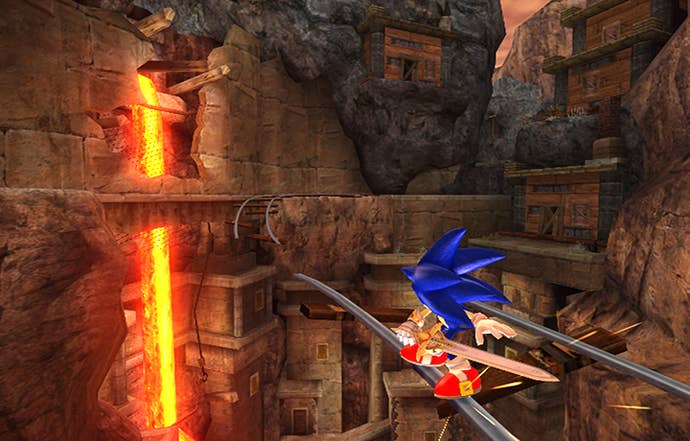
13. Sonic and the Black Knight
Sonic and the Black Knight is the second–and last–game in Sonic the Hedgehog's storybook adventures. It's an auto-running game like its predecessor, and the mechanic still isn't compelling, but at least the collect-a-thon aspects that bog down Secret Rings are scaled back a little. Sonic also deals less with evil spirits and djinns, and more with dragons and other ferocious medieval beasts.
Black Knight casts Sonic's friends as the Knights of the Round Table and other Arthurian figures, and if you don't think that's tight, get out of my face. OK, but seriously, it's probably a good thing this series was put down before we inevitably reached "Sonic in Narnia" or whatever Sega had planned – even though I'd kill to play a retelling of The Lion, The Witch, and the Wardrobe with Shadow as Edmund. —Nadia
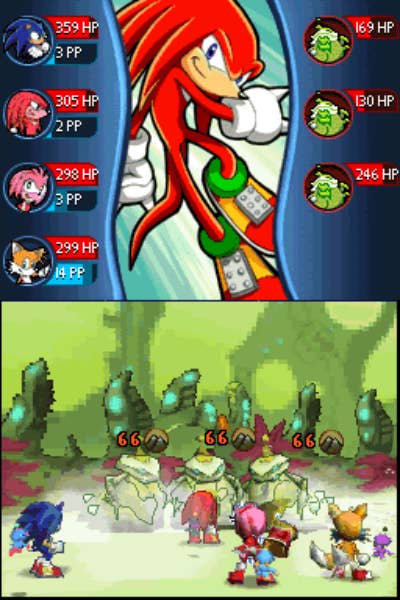
12. Sonic Chronicles: The Dark Brotherhood
We did our best to hew as closely as possible to the more traditional platformers while leaving out the spinoffs, but Sonic Chronicles is big enough that it definitely bears a mention. After all, how often is it that you see a major developer like BioWare make a Sonic game? The nearest equivalent is Squaresoft taking on Mario back in 1996, but even that doesn't quite compare to the disparity here.
Anyway, Sonic Chronicles is clearly geared toward younger players and is thus extremely simple and easy. But it's reasonably polished as DS games go, and it starts to gets interesting around the third hour or so. Its Mario RPG-like combat and navigation both make heavy use of the stylus, bringing familiar elements of the series (loop-de-loops and such) while still being something unique.
It's honestly not much more than a curiosity, but it's better than it could have been. And in the context of the bad old days of 2008, that definitely qualifies as progress for the series.
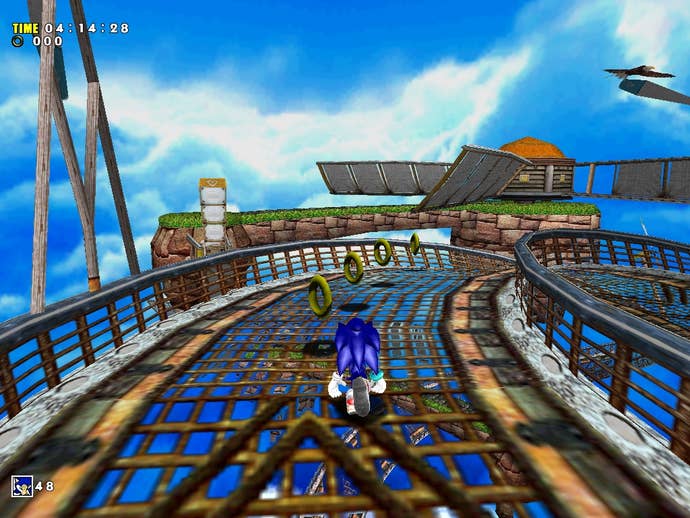
11. Sonic Adventure
Sonic's first major 3D game isn't one I long to replay, but I appreciated it in 1999. Though Sonic Adventure is arguably the start of the hedgehog's mindless "press right to go fast" phase, the sheer novelty of burning up the 3D scenery at Mach 2 made me giddy. I didn't appreciate that clumsy hub world, though. I still don't.
As neat as Sonic Adventure seemed at the time, I suppose it also marked the start of Sonic's decline as an unfailingly cool character. If Sega wanted to maintain Sonic's reputation as a faster, edgier Mario, it should have spent more than $10 on Sonic Adventure's voice acting and lip-syncing.
That's not a slight against the game's theme song, Open Your Heart, which is perfect in every way. —Nadia
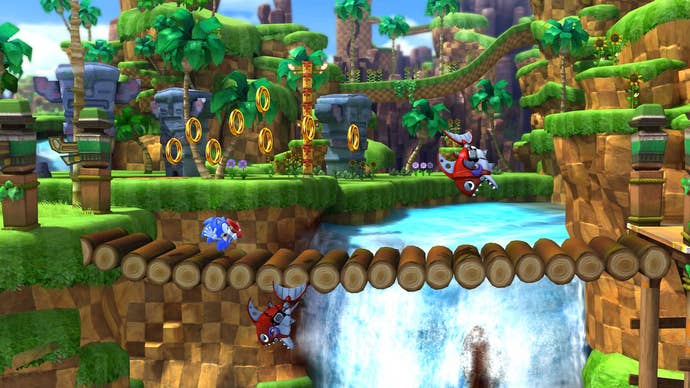
10. Sonic Generations
Sonic Generations was Sega's first answer to sad Sonic fans. "Give us old school Sonic," they often cried in the face of projects like Sonic 06 and beyond. Eventually, Sonic Generations was Sega's answer.
Sonic Generations marries the two playstyles known across the series, even if it doesn't offer a pure 2D Sonic like Sonic Mania does. On one end of Sonic Generations, Sonic adopts his true side-scrolling perspective. On the other end, Sonic embraces the 3D space, and runs along the world like he does all too often today. Sonic Generations has a clever twist, revisiting iconic levels from every Sonic game's past while reimagining them in both ways with slight changes, obviously to accommodate, along the way.
In Sonic Generation's opening hours, the levels are great. You remember how great Green Hill Zone is for the millionth time, and how pleasant it is to see it in a 3D way. You feel the same about City Escape, but vice versa. But once you move past Sonic Adventure 2's offerings, it becomes clear just how troubled the Sonic name became. Nonetheless, Sonic Generations represents a Sega that wanted to try to make all of Sonic's fans happy. It just reminded most of us of Sonic's dark days he's dwelled in for far too long.—Caty
The Good Sonic Games
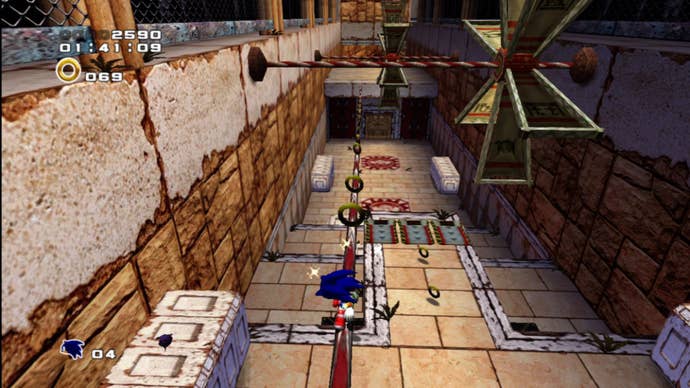
9. Sonic Adventure 2
[Editor's Note: The staff is actually pretty divided on this one, but Caty is pretty passionate in her defense of Sonic Adventure 2, so we'll give her this one.]
I think often about what befell my carefully cultivated Chao garden that both the good guys and bad guys collaborated on. I miss my little demonic Chaos in their hellish lair, where Shadow would visit often. I miss my angelic Chaos that lived in a place that was bright, sunny, and truly a heaven. Sonic Adventure 2 is without a doubt in my mind the greatest 3D Sonic game, and not only for its endearing Chao-raising simulator stuffed into the middle of the game. It's for everything else about it.
After all, there's a reason why people still to this day say, "Rolling around at the speed of sound."
Sonic Adventure 2 is a mess to play, especially revisiting it in recent years. Yet it's a wonderful mess to exist. It's where the series first embraces attitude for the first time, introducing angsty characters like Shadow the Hedgehog and Rouge the Bat. Its levels stick out in your mind, whether it's the steep San Francisco-like hills of City Escape, the Golden Gate Bridge-reminiscent map of Radical Highway, or the haunted open spaces to glide around in Pumpkin Hill.
Sonic Adventure 2's locales burned in your mind not only because of their design, but for the perfect tunes that backed them. City Escape's theme is frankly iconic. Radical Highway's harsh guitars are an unforgettable contrast to the glowing pop-rock of City Escape theme (much like the dichotomy between Sonic and Shadow). Pumpkin Hill's Knuckles the Echidna-themed rap is too catchy for its own good. The Sonic the Hedgehog series has always been one with superb music, but Sonic Adventure 2 was the first Sonic game to define itself by it. And for that, it's one of the best Sonic games to exist.—Caty

8. Sonic and Knuckles
Knuckles was always one of my favorite Sonic characters to play as, so naturally I pretty much only played as him in Sonic and Knuckles. And why shouldn't I? He plays so much better than Sonic, what with his gliding and wall-climbing abilities.
I'm not a huge expert on the 2D Sonic games, and I'm even worse at playing them. Sonic and Knuckles was pretty much the only one I played because I was much better at playing as Knuckles than I was at Sonic in any given 2D Sonic game.
Sonic and Knuckles also had that famous "lock-on" technology that let players combine the Genesis cartridge with the Sonic 3 cartridge to essentially create the definitive version of Sonic 3 and Knuckles . That feature carried over to the Virtual Console version of the game (which I played), but I kind of wish I could see the Genesis version in action. —Matt
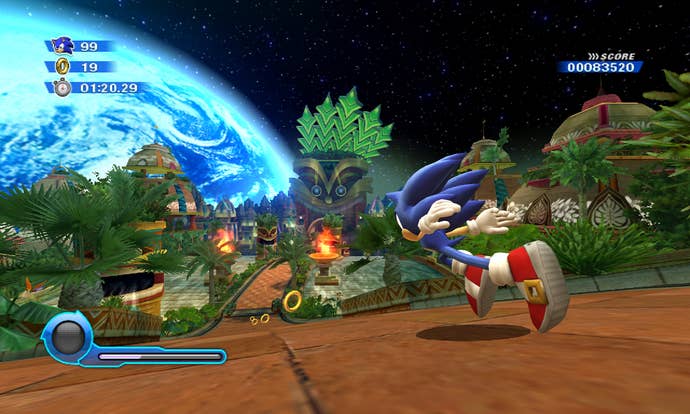
7. Sonic Colors
Sonic Colors never seems to get any love. Maybe it's the unassuming name? Anyway, Sonic Colors applies many of the lessons learned from previous failures: it's more or less a pure platformer and it focuses on the classic characters. The main wrinkle is that Sonic can acquire powers with the help of colored Wisps, which feels like a Sonic-themed take on the classic Mario formula.
Of the two games, I personally prefer the DS version developed by Dimps—the same folks behind the excellent Sonic Advance and Sonic Rush games. But Sonic Colors on the Wii—which basic motion controls and some 3D platforming—doesn't lag all that far behind, so the two are getting combined into one entry. In many ways, Sonic Colors signaled the beginning of Sonic's turnaround. Or at least, it made it a lot more palatable.—Kat

6. Sonic Advance / Sonic Advance 2 / Sonic Advance 3
Bless Japanese developer Dimps for making some of the best looking Sonic games I've ever played. The last two Sonic Advance titles in particular are examples of beautiful bursts of colors and gorgeous sprite work. They're also hands-down my favorite 2D Sonic games.
As for gameplay, Sonic Advance introduces a couple concepts from the 3D games into 2D such as rail grinding, and special melee attacks. All these mechanics were translated great for the Game Boy title, and help mitigate the fact that these games were also hard as hell. Some people also had problems with the team-up mode in Sonic Advance 3, but I didn't mind it so much. Hell I even kind of liked it, although Sonic Advance 2 remains my favorite of the GBA titles.
Ultimately, these three games represent the best Sonic has ever looked in 2D. While these games never felt like the classic 2D Sonic games, their modern twists help them to stand out in the long history of Sonic games. —Matt
The Best
[Unranked for Now]Sonic Mania

5. Sonic the Hedgehog
Folks talk a lot these days about developers and publishers just doing things for money. To which I say, "Yeah, that's the point." Which brings us to Sonic the Hedgehog. The development of Sonic the Hedgehog began in 1990 when Sega looked at Mario, realized how much money Nintendo's mascot was making and decided to get in on that action. Hell, Sega programmer Yuji Naka started with the idea of a Super Mario Bros game but faster.
But it worked. Sonic the Hedgehog was a hit almost immediately, catching rave reviews, great sales, and establishing a rival mascot to Mario himself. From the first level, Sonic the Hedgehog had bright colors that just popped off the screen and a fast style of gameplay that sometimes had Sonic just careening one end of the level to the other. The soundtrack by Masato Nakamura was a dream come true. It was a beautiful game that actually did nearly everything right, which is amazing when you look back on the creation of the character and the franchise.
Without Sonic the Hedgehog, you don't have the franchise. You don't have Sonic Mania. You don't have this list. Sega knocked it out of the park with the first game, and while it's not the best in the series, it's still a damn sight better many of the games that followed it. —Mike

4. Sonic the Hedgehog 3
Sonic 3 was probably the most ambitious Sonic game of them all. It was so big that Michael Jackson was rumored to be involved as an uncredited contributed to the soundtrack. It represented Sega at its apex, which is one of the many reasons it tends to be remembered fondly by fans. And who doesn't love Knuckles—the quasi-villainous echidna?
But Sonic 3 might have too big for its own good. Indeed, it wound up being split in two, possibly to its detriment. Still, there are more than a few people who enjoy Sonic 3 for its sheer scope and polish. Hydrocity Zone and its rushing water, as well as the inventive Launch Base Zone, are routinely ranked among the best levels in the series.
Whatever your opinion of Sonic 3 and Sonic and Knuckles, it was definitely the end of an era. There would not be another mainline Sonic game until the Dreamcast, where he would kick off a whole new adventure… and many new challenges.—Kat
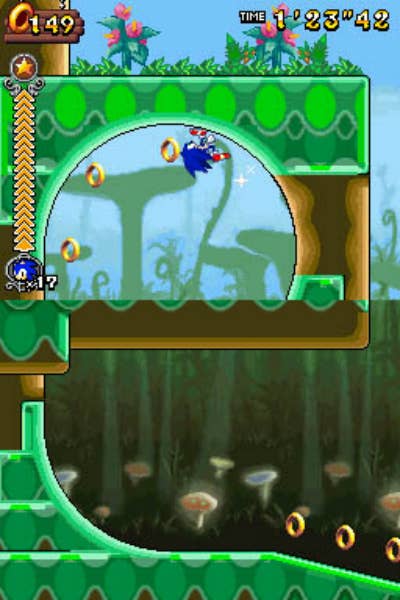
3. Sonic Rush / Sonic Rush Adventure
Sonic Rush and Sonic Rush Adventure are some of the best Sonic games this side of the original games. Developed by a handful of Sega veterans including the venerable Yuji Naka, the Sonic Rush games successfully merge 2D and 3D elements to create a kind of hybrid between the old style and the new. In addition to being the absolute fastest games in the series, they mix in a handful of extra elements, like Sonic's snowboard.
Of the two, fans tend to like Sonic Rush Adventure the most, praising its massive and memorable boss encounters. Both have stories have to tell, neither of which are particularly great, but they are thankfully much easier to ignore than the ones from the later games. Mostly, they're a fun, fast evolution of the classic design that points to what a successful Sonic game can look like in the 21st century.
Best of all, they're compatible with the Nintendo 3DS, so you can still play them today. And they look great, too.—Kat
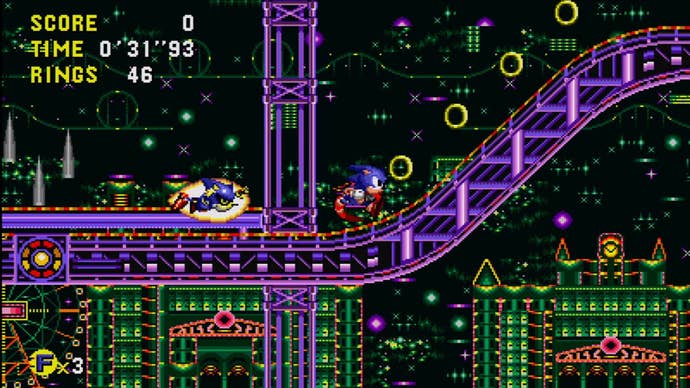
2. Sonic CD
Sonic CD was much like Sonic 3 in that it wanted to be big. But unlike Sonic 3, Sonic CD focused on unique gameplay mechanics, namely its Time Crystals. With these crystals, Sonic could travel to the future or the past and affect the level in various ways. The result still resembles your typical Sonic platformer, but it's definitely more nuanced than the rest of its 16-bit brethren.
Sonic CD was unfortunately hampered by its platform in a number of respects. Aside from the fact that hardly anyone played it—the Sega CD wasn't exactly a besteller—it tended to suffer from dropped frames. It wasn't until a few years ago that it received a facelift, bringing it in line with our fond memories.
With its freshly remastered graphics, Sonic CD is a bit more esoteric than its siblings, but it's undoubtedly among the best in the series. Just make sure to play it with the Japanese soundtrack. You'll thank us later.—Kat

1. Sonic 2
You don't get better than Sonic 2. Full stop.
I got in an argument with a friend once about the Sonic series. He argued, "Is there even a definitive Sonic game?" to which I said, "Sonic 2." (Along with maybe a swear word or two embellishing that.) Sonic the Hedgehog 2 is the definitive Sonic game. That's because more than its predecessor, Sonic 2 is a game with smart level design, level design that rivaled the best of Mario—Casino Night Zone and Chemical Plant Zone specifically among the series' best.
Where the original Sonic was a game that too often stopped you dead in your tracks, destroying any momentum you once had, Sonic 2 is a game wholly about retaining that drive. It still bears consequences if you mess up, but the halts never feel cheap. It's a game that not only tells you "gotta go fast," but helps you sustain it in the long run. Sonic 2 was like the training wheels for the other Sonic games to come: establishing his speed, learning the ropes, the post-origin story for the blue-spikey fellow. Sonic, at last, went fast. —Caty








